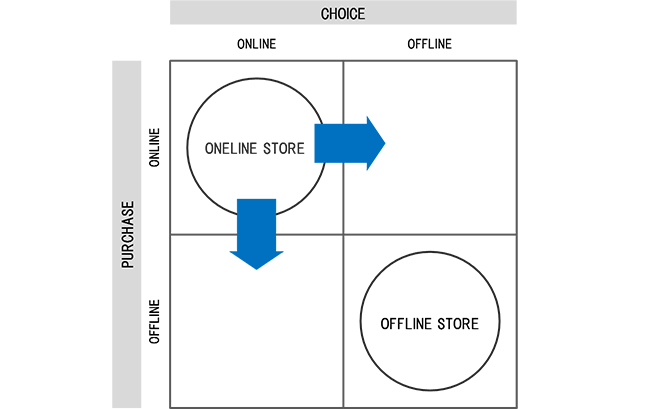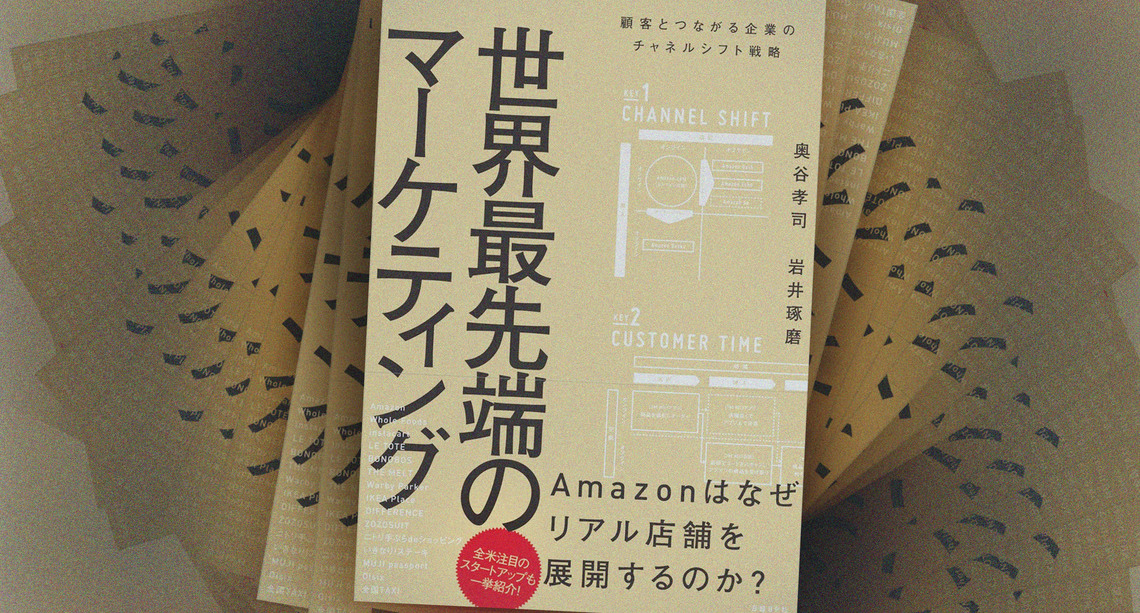I headed downtown for some weekend shopping, but forgot my wallet.
But being a modern-day Sazae-san who never forgets her smartphone, I used Apple Pay to get around.
When I found clothes I wanted to buy at a clothing store, I ordered them on ZOZOTOWN. For cosmetics I tried and liked at the department store, I clicked "Buy" on Amazon and had them delivered later. I ended up having a perfectly pleasant day without any inconvenience whatsoever.
As a regular consumer, I clearly felt the shift in everyday shopping experiences and my own "omnichannelization"—skillfully moving between physical and online spaces. Companies are also fiercely competing to create touchpoints and connections with customers, adapting to these changes in behavior and needs.
While "omnichannel" was often discussed primarily in terms of offline businesses, attention is now shifting to online companies expanding offline, as seen in Amazon's acquisition of Whole Foods and the opening of its unmanned convenience store "Amazon Go."
Seamless integration of online and offline
The book introduced here is "The World's Most Advanced Marketing: Channel Shift Strategies for Companies Connecting with Customers" (Nikkei BP).
This book redefines the much-discussed "omnichannel" concept as "channel shift." It explains how online-based companies, represented by Amazon, are expanding (shifting) into offline spaces to create new customer connections. It uses a "Channel Shift Matrix" with two axes—"selection" and "purchase"—and illustrates this strategy with case studies.

Channel Shift Matrix (from p.15)
Horizontal Axis = Where customers explore information and "select" products to purchase
Vertical Axis = The "place where customers complete their purchase"
Each is mapped into a four-quadrant matrix based on whether it exists online or offline
Taking Amazon as an example, the Amazon we knew (Amazon.com) previously positioned both "selection" and "purchase" online (upper-left quadrant).
However, Amazon has since developed new devices like "Amazon Dash," which enables one-button purchasing of specific branded products on Amazon.com, and "Amazon Echo," a voice-activated device that delivers goods to your home simply by saying, "Alexa, order toilet paper." These innovations have brought the gateway to online purchasing into the offline space of the home, enabling offline selection.
Furthermore, "Amazon Go" delivers a new offline shopping experience: customers launch the app, enter the store, select desired items, and simply walk out without paying at a register, with payment completed automatically via their online account.
Furthermore, the launch of Amazon Go represents not only a channel shift to offline, but also enables Amazon to leverage the app to identify customer IDs. This allows Amazon to understand customer characteristics and shopping behaviors that were previously unknown online, deepening its understanding of customer actions and strengthening its "connection with customers."
Companies implementing strategic channel design
Thus, Amazon is not merely adding channels. Instead, leveraging its strength in online "customer connection," it strategically designs channels (channel shift) using technology. This ensures customer movement between online and offline occurs within its own channels.
As illustrated by my own experience mentioned earlier, people are now seamlessly enjoying shopping experiences without consciously distinguishing between online or offline channels. This trend is clearly set to accelerate further.
I strongly feel that, for both retail and advertising, the key will be how effectively we can integrate into the seamless online/offline customer journey, create touchpoints, and strengthen connections.
This book offers multifaceted insights into the question, "Why is Amazon expanding into physical stores?" It proved to be an exciting read, both from my perspective in the advertising industry and as an individual consumer.








